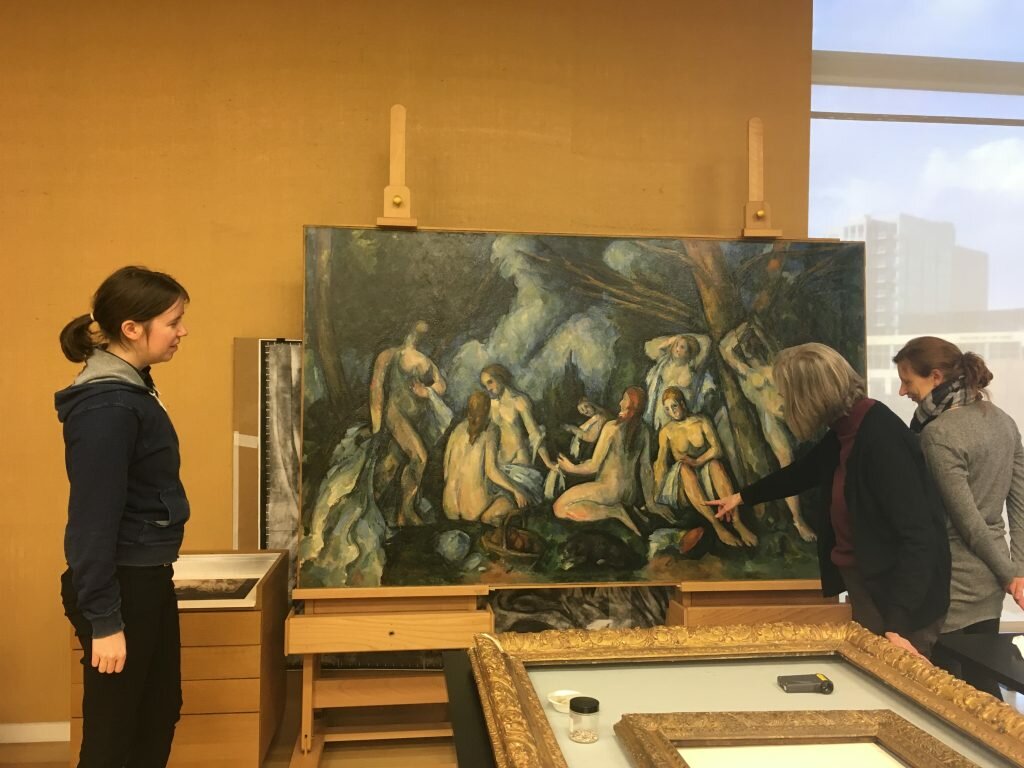more test posting


more test posting


Written by Amelia Dogan

Maybe you’re one of the only of your friends left in Philly over the summer. Maybe you didn’t want to go to the beach and deal with all the sand. Maybe you have a free day and are bored. Maybe you want to hang out somewhere with your friends that is air conditioned. Whatever the reason, look no further than to museums for your FREE summer fun.
Art can be confusing. It’s not easy to look at a painting or installation and immediately understand all of it. Sometimes artists have a specific vision, technique, or history they are referencing. All of these different methods of looking at art can cause a lot of people to just give up with contemporary art when in reality there is someone there to help you. This is where the ICA’s Extra Credit series comes in. On most Sunday afternoons in the summer starting at noon, the ICA has artists, experts, and professors coming in to teach about different aspects of art. Maybe you’re interested in propaganda, public art, or writing about art. Find out more topics here!
Summer can also be confusing. Everyone is in their feelings (RIP Summer of Drake 2018); the weather is hot, people are out here being messy. Sometimes, all I want is to step back and take a breather. Remind myself that none of this is permanent. Before starting hectic filled weekends, a meditation can be useful. Don’t let the word meditation freak you out; you’re not signing up to be Buddhist monk for the rest of your life. It’s beginner friendly. Often the instructors will talk to you throughout the meditation. The ICA offers on Fridays at noon a one hour meditation session called Mindfulness at the Museum.
Don’t forget to check out the other ICA’s events including film screenings, music, and exhibition tours.
Another thing to look forward to is Bloomsday, a day dedicated to the book Ulysses by James Joyce. This year it is onJune 16 which is also Father’s Day. The book Ulysses is set in Dublin and considered one of the great literary classics. The Rosenbach in the Rittenhouse Square neighborhood offers a read-along and musical performances throughout the day (11AM – 8PM). The Rosenbach museum will also be free all day and there will be food trucks. The even is open to everyone from James Joyce fans to people who have never heard of Ulysses. For more information check here!
Enjoy your summer!
Written by Amelia Dogan

Sure, it’s great when I have a friend to go to a museum with, but more often than not, most of my friends are not available or not interested in going to museum with me. They find museums dull, unengaging, or otherwise unwelcoming to them. Those feelings though, are a part of a much larger question about who cultural institutions welcome and are inclusive towards. All young people should feel confident using the STAMP pass to engage more with Philadelphia. However, that is not the purpose of my post today; I want to talk about the discomfort of being alone at an event.
Going to a museum alone will probably not feel great at first. It takes a lot of confidence to leave my house and go to a museum. I sometimes feel awkward, shy, and that I shouldn’t be there alone. These feelings are normal but learning how to be alone is important. There will be points when you leave home and being able to spend time with yourself is part of being an adult. There are differences being alone and lonely though; mostly, it is about the state of mind. It is important to focus on your motivation for going to the museum in the first place. I go to museums because I’m curious about their collection or a specific event. I usually bring a pair of headphones to listen to music or a podcast while getting to the museum. This helps to ease my uneasiness. I might bring a book or check social media if I feel too out of place waiting for an event to start.
Usually, by the middle though, I start to notice that yes, other people are here alone. I don’t stand out because I am here alone. However, some people will always be uncomfortable about having a young person in the space. Sometimes, they give me weird looks or comment about my age. This is a stigma that we need to change because museums are supposed to be public institutions that welcome all sorts of folks. By going to a museum alone, I hope to normalize the idea that young folks are welcome to spend their free time in the museum. After all, that’s what the STAMP pass is for.
Written by Abby Leedy

What is an art conservator?
An art conservator works to conserve original works of art, generally with a focus on preserving them as the artist originally intended them to look. They can work to conserve different kinds of art, often distinguished by kind of material- either paint, paper, or furniture. I spoke to Barbara Buckley, who works in paint conservation at the Barnes Foundation.
Art conservators generally do work in three areas within their material specialization: treatment, research, and prevention.
Work in research generally consists of working on understanding the material the artist was using (the kinds of paint, etc), and researching the chemical makeup- for instance, conservators at the Barnes find the period elements in the paint of art they are working to conserve, and can use this information to determine the exact pigment of the paint (paint with arsenic and copper, for instance, creates a specific emerald color favored by Cezanne). Art conservators use many tools for research, including X-Rays and UV light.
Work in treatment involves doing physical ‘touch-ups’ n the art- using the information gathered in research to determine which paints to use to repair weathered sections of the painting, for instance. Treatment can also include removing and replacing varnish and glaze on paintings, or re-pairing discoloration or mistakes made by conservators of different eras (this is especially important for older paintings that have been held by many collectors and museums).
Work in prevention includes using information from the research process to alter the environment the art is being kept in to make it most hospital to the art (regulating light, temperature, etc), as well as doing periodic check-ups on the art and determining what treatment, if any, is necessary.
What kind of education do art conservators need?
Jobs in art conservation almost always require a master’s degree in art conservation. In the United States, there are three programs where art conservators get their degrees: at the University of Delaware, the University of Buffalo, and New York University. Conservators all take the same courses of study in their first year, and specialize by material in their second. Art conservators need a solid background (generally a undergraduate degree or undergraduate study in) studio art, art history, and chemistry. One art conservationist I spoke with (also at the Barnes) started her undergraduate work in chemistry, before adding studio art and art history and attending graduate school. The other, Barbra, studied studio art and art history as an undergraduate, and had to complete additional coursework in chemistry before beginning graduate school.
Where do art conservators work?
Art conservators generally work in museums, but can also work at other non-profits, like historical societies, or for private collectors.

An interview with the head conservator at the Barnes:
This is from information gather (rather than quotes from) an interview I conducted with Barbra Buckley, the head of the conservation department at the Barnes Foundation.
What is your day-to-day work like? Barbra says that her day-to-day work often includes a mix of research and treatment, both of which she finds exciting. This usually means working on a specific painting- figuring out which chemicals or elements are part of the paint, which pigments were used, when it was worked on, which additions or alterations were made by the artists or other conservators, etcetera. She also works to repair works altered by weathering or other conservators- this could mean using specific chemicals to remove the clear varnish on top of the original paint, or repainting parts of a painting that were discolored.
What is your favorite part of your work? Barbra says that her favorite parts of her work are that it “doesn’t get boring” and that the field mixes many things that she finds interesting- including chemistry, art history,a dn studio art. She says that all of these focuses gives her the opportunity to really “understand’ the artist whose work she is conserving.
What project are you working on right now? Currently, the conservation team the Barnes is working on researching and conserving a painting from Cezanne’s Bathers series, from the end of his career. They are working with a special grant provided by the Bank of America, and hope to better understand Cezanne’s artistic process and materials.